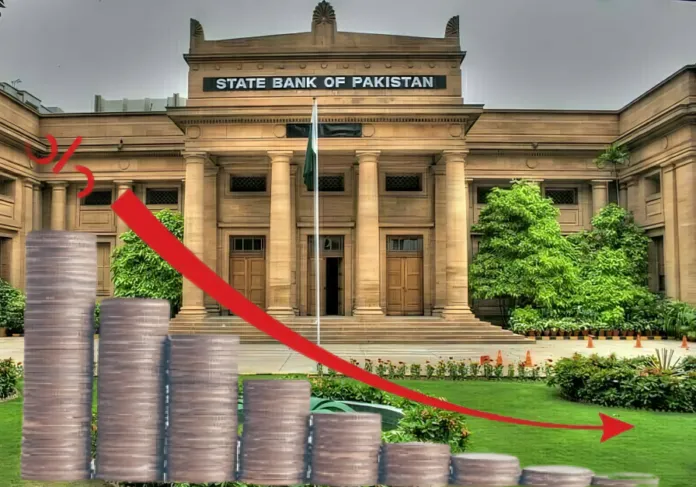The SBP New Monetary Policy Rate has been set at 15% following a significant cut of 250 basis points by the State Bank of Pakistan (SBP). This decision marks a pivotal moment in Pakistan’s economic landscape, as it reflects the central bank’s response to the current economic challenges, including inflation and currency stability. The new rate aims to provide some relief to borrowers while encouraging investment in a struggling economy.
SBP Sets New Monetary Policy Rate
The SBP’s decision to reduce the policy rate is designed to stimulate economic activity by making borrowing cheaper for businesses and consumers. This reduction aligns with the government’s broader strategy to foster growth amidst rising inflation and to enhance economic stability. The SBP aims to strike a balance between controlling inflation and promoting growth, a challenging task given the current economic climate.
Background of the Policy Change
The economic environment leading up to the SBP New Monetary Policy Rate adjustment has been marked by fluctuating inflation rates and a struggling currency. Inflation surged to historic highs, peaking at over 35%, prompting the SBP to take decisive action to mitigate its impact on the economy. With the previous policy rate standing at 17.5%, the central bank’s latest move is part of its ongoing efforts to address economic instability and restore investor confidence.
Economic Implications of the Rate Cut
1. Impact on Borrowing Costs
With the SBP New Monetary Policy Rate now set at 15%, businesses can expect reduced borrowing costs, which may encourage them to invest in expansion and operational improvements. This could lead to job creation and increased economic activity, benefiting the overall economy.
2. Inflation Control Measures
While the immediate effect of the rate cut is to stimulate growth, it also raises concerns about potential inflationary pressures. The SBP has indicated that it will continue to monitor inflation closely and may take further measures if necessary. The balance between stimulating growth and controlling inflation is delicate, and the SBP’s approach will be crucial in navigating this complex landscape.
3. Investor Confidence
Lower interest rates can enhance investor confidence, as they create a more favorable environment for investment. The reduction in the policy rate could attract both local and foreign investors looking for opportunities in a recovering economy. However, this will depend on the government’s ability to maintain economic stability and effectively manage inflation.
Role of SBP in Economic Management
The State Bank of Pakistan plays a critical role in shaping the country’s economic policy through its monetary policy decisions. The SBP New Monetary Policy Rate serves as a tool for the central bank to influence liquidity in the economy. By adjusting the rate, the SBP aims to either stimulate or cool down economic activity based on prevailing economic conditions.
Future Outlook
Looking ahead, the SBP will need to remain vigilant in monitoring economic indicators to ensure that the benefits of the SBP New Monetary Policy Rate are realized without triggering unwanted inflation. The central bank has committed to a transparent approach, keeping stakeholders informed of its policy decisions and the rationale behind them.
The SBP New Monetary Policy Rate represents a significant shift in Pakistan’s monetary policy, reflecting the central bank’s response to current economic challenges. As the country navigates through these turbulent times, the implications of this policy change will unfold in various ways. Stakeholders across the economy must remain aware of these developments and their potential impacts on growth, investment, and inflation.


